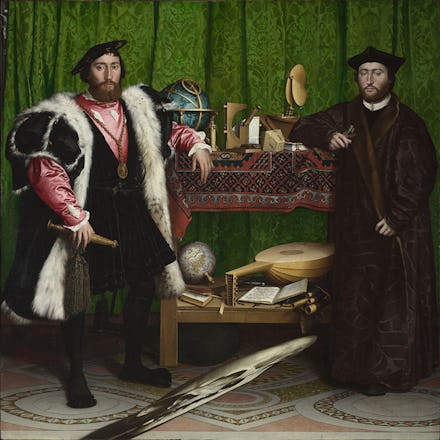This 500-Year-Old Painting Holds a Mind-Bending Visual Trick — And a Fun Little Aside

It wasn't until Leon Battista Alberti provided the first working theory of linear perspective that Renaissance painters began translating the three-dimensional world onto canvas. Within another 100 years, some painters were such masters of the technique that they could use it to screw with the minds of viewers.
Artist Hans Holbein the Younger's painting "The Ambassadors," a 1533 portrait of a French politician and a bishop, continues a tradition of portraying "learned men" alongside the stuff smart men use for that learnin' (globe, book, sundial, musical instruments), according to the website of the U.K.'s National Gallery.
But then things get weird.
At the men's feet is a bizarre rendering of a skull that looks like it might require 3-D glasses. But if you stand to the right of the painting the skull (or turn your computer screen just right), the skull appears fully rendered.
While 21st-century viewers of "The Ambassadors" might consider it merely a playful optical illusion, art critics say it serves as a reminder of mortality, should you stop to consider it.
Indeed, you can observe the painting from an angle and see the skull clearly while the other objects are distorted, or view the painting straight on, glossing over the distorted symbolism staring you in the face.
Because, lest you forget — we're all gonna die.